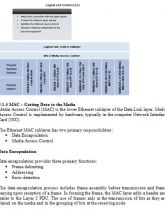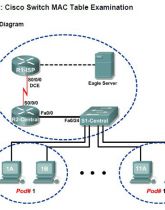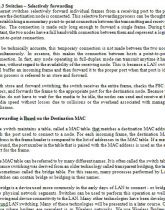Poznámky: Cisco (9 kapitola)
Skryť detaily | Obľúbený- Kvalita:83,3 %
- Typ:Poznámky
- Univerzita:Technická univerzita v Košiciach
- Fakulta:Fakulta elektrotechniky a informatiky
- Kategória:Technika
- Podkategória:Informatika
- Predmet:Počítačové siete
- Autor:weissquin
- Ročník:2. ročník
- Rozsah A4:80 strán
- Zobrazené:2 203 x
- Stiahnuté:2 x
- Veľkosť:15,3 MB
- Formát a prípona:Archív súborov (.zip)
- Jazyk:anglický
- ID projektu:4451
- Posledna úprava:03.09.2017
Up to this point in the course, each chapter focused on the different functions of each layer of the OSI and TCP/IP protocol models as well as how protocols are used to support network communication. Several key protocols - TCP, UDP, and IP - are continually referenced in these discussions because they provide the foundation for how the smallest of networks to the largest, the Internet, work today. These protocols comprise the TCP/IP protocol stack and since the Internet was built using these protocols, Ethernet is now the predominant LAN technology in the world.
Internet Engineering Task Force (IETF) maintains the functional protocols and services for the TCP/IP protocol suite in the upper layers. However, the functional protocols and services at the OSI Data Link layer and Physical layer are described by various engineering organizations (IEEE, ANSI, ITU) or by private companies (proprietary protocols). Since Ethernet is comprised of standards at these lower layers, generalizing, it may best be understood in reference to the OSI model. The OSI model separates the Data Link layer functionalities of addressing, framing and accessing the media from the Physical layer standards of the media. Ethernet standards define both the Layer 2 protocols and the Layer 1 technologies. Although Ethernet specifications support different media, bandwidths, and other Layer 1 and 2 variations, the basic frame format and address scheme is the same for all varieties of Ethernet.
This chapter examines the characteristics and operation of Ethernet as it has evolved from a shared media, contention-based data communications technology to today's high bandwidth, full-duplex technology.
Internet Engineering Task Force (IETF) maintains the functional protocols and services for the TCP/IP protocol suite in the upper layers. However, the functional protocols and services at the OSI Data Link layer and Physical layer are described by various engineering organizations (IEEE, ANSI, ITU) or by private companies (proprietary protocols). Since Ethernet is comprised of standards at these lower layers, generalizing, it may best be understood in reference to the OSI model. The OSI model separates the Data Link layer functionalities of addressing, framing and accessing the media from the Physical layer standards of the media. Ethernet standards define both the Layer 2 protocols and the Layer 1 technologies. Although Ethernet specifications support different media, bandwidths, and other Layer 1 and 2 variations, the basic frame format and address scheme is the same for all varieties of Ethernet.
This chapter examines the characteristics and operation of Ethernet as it has evolved from a shared media, contention-based data communications technology to today's high bandwidth, full-duplex technology.




